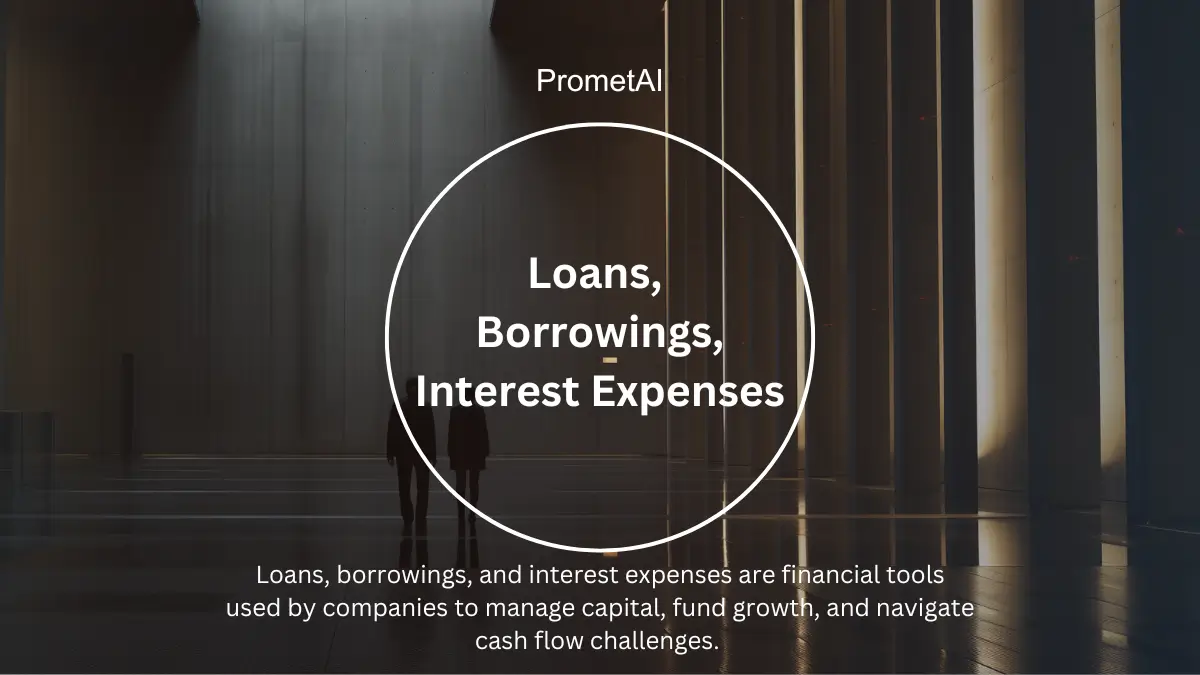When companies raise capital through external parties, they take on either loans, typically via banks or structured credit agreements, or broader borrowings, including bonds, notes, and other market-facing obligations. These liabilities represent a binding claim on cash flows and assets, but also enable firms to scale, invest, and remain competitive without diluting shareholder equity.
There’s a fundamental trade-off: debt preserves ownership, but not flexibility. It introduces timing obligations (repayment schedules), contractual limitations (covenants), and recurring costs (interest). The precise makeup of that debt, its duration, security, currency, and rate type, determines its impact on the balance sheet, credit rating, and market perception.
Short-term debt helps manage operating liquidity but carries refinancing risk.
Long-term borrowings offer stability but may restrict flexibility if tied to restrictive covenants or fixed interest during declining rate cycles.
Secured debt lowers cost but ties up collateral.
Unsecured debt adds flexibility but increases pricing risk.
Interest Expense: The True Cost of Leverage
Every dollar borrowed carries a cost and that cost is captured as interest expense. This figure appears on the income statement and often plays an outsized role in determining a firm’s net profitability and cash retention.
Interest is more than a charge; it’s a function of strategy:
A fixed-rate structure signals stability-seeking behavior.
Floating-rate exposure reflects confidence in declining rates or hedging capability.
High effective rates may suggest credit risk or poor negotiation, while lower rates often reward scale, ratings, or collateral strength.
In high-rate environments, interest expense becomes a focal point in analyst calls. It constrains free cash flow, compresses margins, and may lead to internal reprioritization of capital spending.
How to Calculate Interest Expenses
At its simplest, the formula is:
Interest Expense = Outstanding Principal × Interest Rate × Time
This works for plain vanilla debt. But in practice, real-world complexity arises from:
Floating rates (e.g., tied to SOFR or EURIBOR).
Periodic resets and compounding.
Facility fees, penalties, or amortization adjustments.
Multi-currency loans with FX effects.
A company borrowing $1.5 million at a 6.5% annual fixed rate incurs $97,500 in yearly interest. But if the loan is floating with a rate reset every quarter, and benchmark rates are volatile, then the interest must be modeled under multiple scenarios especially in rising rate environments.
Advanced firms forecast interest under different macroeconomic conditions, using tools like interest sensitivity tables and hedge accounting to stabilize exposure.
Where These Items Appear in Financial Statements
Loans, borrowings, and interest expenses flow through all three financial statements, but their significance lies not just in where they appear, but in what they signal about a company’s leverage strategy, liquidity position, and capital discipline.
Balance Sheet
Borrowings are reported as financial liabilities, split between:
Current liabilities: Debt obligations due within 12 months, including revolving facilities, current portions of term loans, and short-term paper.
Non-current liabilities: Debt with maturities beyond one year, including term loans, bonds, and long-term leases.
The split reflects liquidity exposure and refinancing timelines. Under IFRS and US GAAP, most borrowings are measured at amortized cost, though fair value treatment applies in designated cases. Unamortized issuance costs, premiums, and discounts are netted against the carrying value.
The structure and classification of debt provide direct inputs into liquidity ratios, net debt calculations, and capital structure optimization models.
Income Statement
Interest expense appears under finance costs and reduces earnings before tax (EBT). While it’s a straightforward expense line, its implications run deep:
It affects EPS, return on equity, and free cash flow to equity (FCFE).
It directly influences credit metrics (e.g., interest coverage, fixed-charge coverage), which shape borrowing capacity and ratings outlook.
When lease liabilities or hybrid instruments are involved, interest components may be disaggregated under IFRS 16/ASC 842.
Importantly, capitalization of interest (under IAS 23 or ASC 835) can defer expense recognition temporarily boosting EBITDA but increasing balance sheet leverage.
Cash Flow Statement
The statement of cash flows reveals the real economic impact of debt, beyond accrual-based reporting:
This classification materially affects operating cash flow and derivative ratios (e.g., cash interest coverage, FCF), which are closely monitored by lenders, analysts, and internal capital committees.
The Link Between Borrowings and Interest: Strategic Trade-Offs
While it's intuitive that higher borrowings lead to higher interest expense, the relationship is influenced by numerous second-order factors:
Weighted Average Cost of Debt (WACD) depends on the mix of secured vs. unsecured, local vs. foreign currency, and fixed vs. floating-rate instruments.
Duration matching between debt and asset profiles reduces refinancing risk but may increase cost if long-term debt is more expensive.
Liquidity buffers (e.g., undrawn credit lines) provide flexibility but also involve commitment fees and reduce capital efficiency.
Strategic CFOs and treasurers manage this through dynamic capital structure optimization targeting a balance between tax-advantaged debt and financial resilience. The ideal structure minimizes WACC without introducing excessive insolvency or covenant risk.
Example: A Realistic Credit Scenario
Consider a company with the following debt structure:
$2.5 million term loan at 6.5% fixed
$1 million corporate bond at 7.25%
$500,000 revolving facility at 8%
Annual interest expense:
(2.5M × 6.5%) + (1M × 7.25%) + (0.5M × 8%) = $162,500 + $72,500 + $40,000 = $275,000
On the income statement, this $275,000 appears as a finance cost, directly reducing earnings.
On the balance sheet, the total $4 million in borrowings is divided between current and non-current liabilities based on repayment timelines.
On the cash flow statement, principal repayments and interest payments flow through financing activities, influencing free cash flow and liquidity position.
This example illustrates how a moderately leveraged company can face a substantial recurring cost highlighting the importance of aligning debt structure with cash generation capacity.
